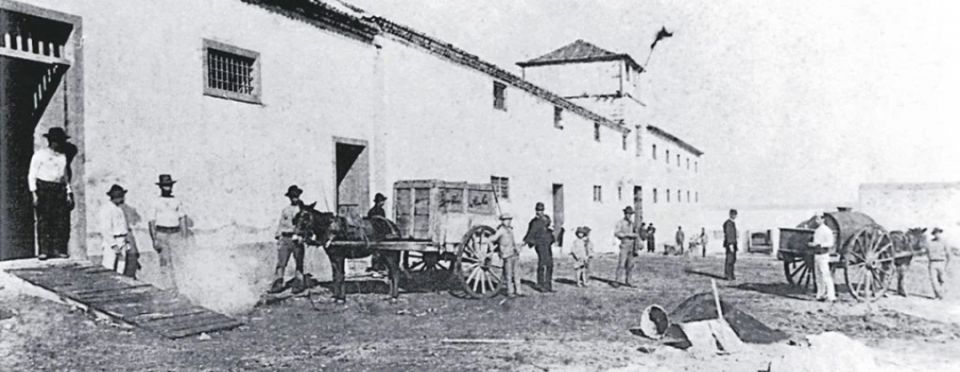
During the centuries leading up to the Conquistadores, pirates traversed the seas near the islands, many of the better known among them with regular connections and stop-offs here – in fact it is as a result of the pirate attacks that Adeje now celebrates one of its most important festivals, as the original home of the town’s patrons, la Virgen de la Encarnación, was in San Sebastian, but on the orders of the town leader Pedro de Ponte, she was brought up to the town away from the coastal village, but with a promise by the people that she would go back once a year. They also asked for her intervention in the 17th century to save the borough from a plague of locusts, which she did, and she is remembered and carried down to San Sebastian every year.
Documents in the town archives also note the existence of an epidemic during October – November in 1791, though there are few details, save notations of monies spent on “honey and sugar” to help in curing the slaves (who worked in the plantations around the Casa Fuerte).
In 1893 cholera struck Tenerife (and Europe) but it was the island’s capital Santa Cruz de Tenerife that was most affected. The city was quarantined for 3 months, with many deaths registered, reports of a scarcity of resources and many people in desperate need of social services, with soup kitchens very much in demand. Parts of the south of the island were affected – in the main Arona, Vilaflor, Fasnia and Candelaria with note made of the work of doctors Eduardo Domínguez Alfonso and Juan Bethencourt Alfonso. Newspapers of the time spoke of road closures along the Güimar – Adeje stretch and demands for disinfectant by the people of Adeje, and in fact the borough wasn’t badly affected by the outbreak according to archives still in existence. No deaths from cholera were recorded, although there was note of a 2-year old, José Hernández Ramos dying from meningitis. However there was mention of typhoid in Adeje, Fasnia and San Miguel during this time, with calls from Civil Governor to local authorities to care more for local populations.
In 1893 another calamity struck Adeje, with a plague of a type of destructive African crickets, causing “great alarm to the town” according to the local paper, El Liberal de Tenerife, at the time. On March 10th the same paper published an article calling for action from the authorities in the south, reminding them that a plague a year previously had destroyed crops of vines, figs, and more. The insect infestation also affected the local water supply. On April 4th the paper reports the calling of a municipal council to work on the eradication and there were no more reports thereafter.
In 1914 Adeje suffered badly from an outbreak of chicken-pox and smallpox and the San Sebastian hermitage was used as a hospital, with the local population also following the alarming news from the European mainland as war was breaking out. And according to local reports the outbreak was all the more alarming as a vaccination campaign had been undertaken previously, freely administered thanks to the municipal health inspectorate. But this outbreak lead to a fresh look at measures needed to avoid the spread of diseases and the benefits of isolation. Some documents also speak of a coloured rope placed around the affected zone. (Testimony of Don Manuel Jesús Ramos Hernández).
In 1930 there are calls by a doctor of the town, Don Pedro de las Casa Pérez, for the construction of an isolation hospital, for infectious diseases, but that never happens despite the support of the mayor of the time. It would seem that the town had suffered another contagious infection, with the provincial sanitation head ordering a campaign to de-rat the town as well as vaccinate the population as a preventative measure in the neighbourhoods of Tijoco and Hoya Grande, with the local doctor “working day and night to eradicate the infection”. However with the proclamation, nationally, of the II Republica, the local council members changed and the project was never advanced.
• Authors: Lilia Esther Rodríguez Martín. Adeje Heritage Department and Juan Desiderio Afonso Ruiz Adeje Heritage councillor.
Full text in Spanish and original document references: https://www.adeje.es/patrimonio/blog